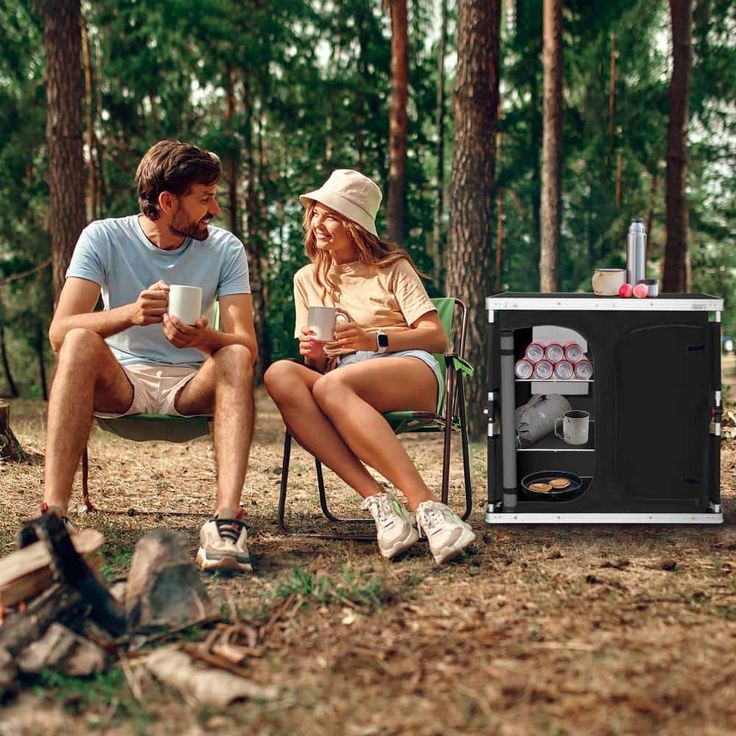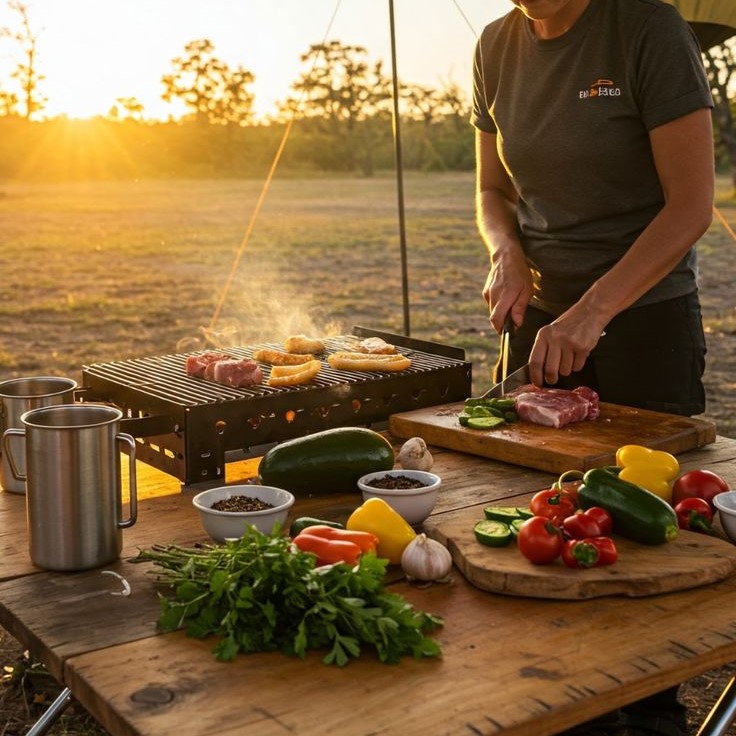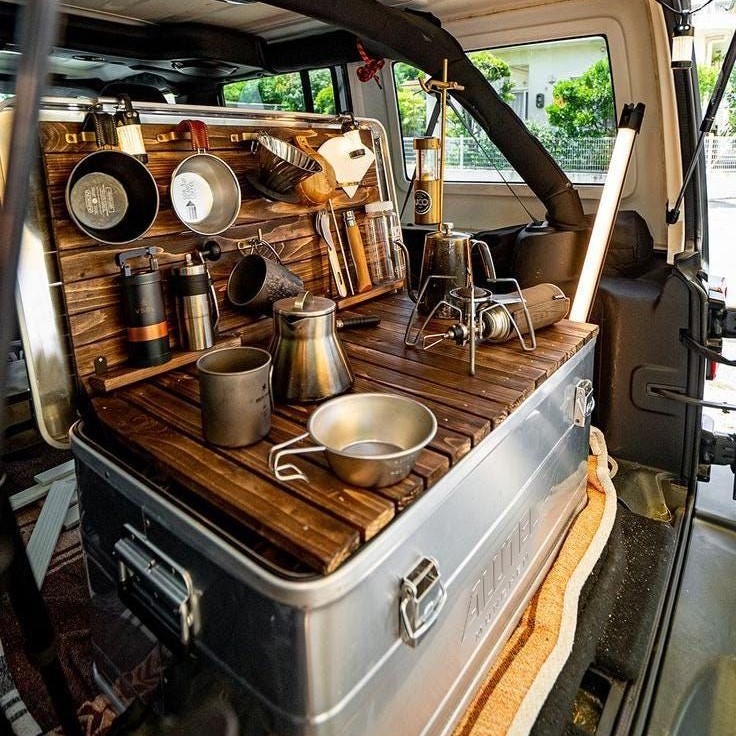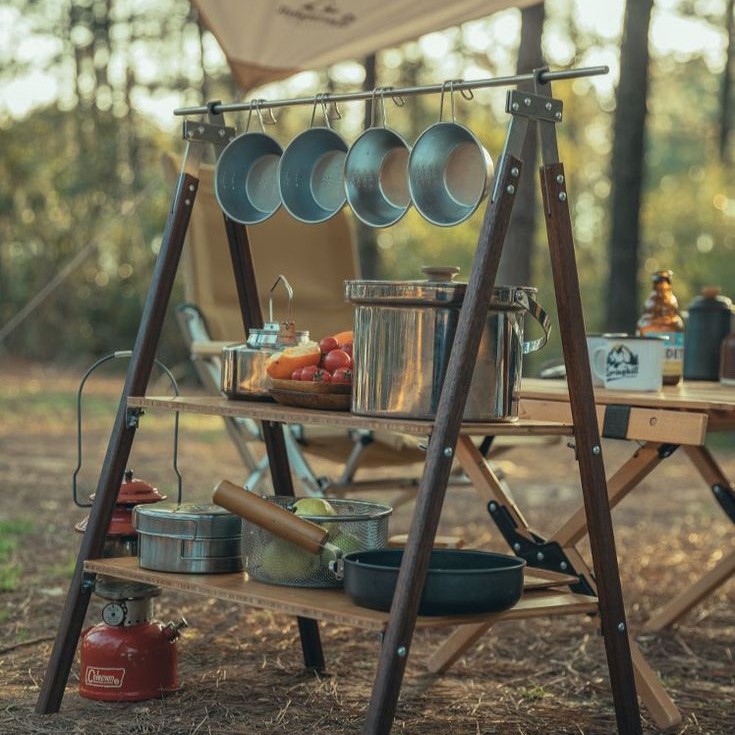Introduction
When it comes to camping, the thrill of exploring nature often contrasts with the challenges of meal preparation. This is where a well-organized camp kitchen setup becomes invaluable. It serves as the heart of your outdoor culinary experience, offering a space to cook, prepare, and enjoy meals amidst stunning scenery. Whether you’re hiking deep into the wilderness or setting up a base camp at a campsite, effective organization can transform your outdoor cooking experience.

In this comprehensive guide, we will discuss everything from the essential tools you need for a successful camp kitchen to tips on how to keep everything organized. You’ll learn how to maximize your cooking setup to enhance efficiency and make your camping experience enjoyable, allowing you to spend less time worrying about meals and more time enjoying the great outdoors.
Understanding the basics of a camp kitchen setup is crucial for any camping adventure. First, we’ll explore the must-have equipment and materials you’ll need; then, we will dive into the best practices for organizing your space effectively.
Essentials for Your Camp Kitchen
A successful camp kitchen setup relies on the right gear and organization. Here are the vital components you should consider including in your camping gear list:
Cooking Appliances and Stoves
The heart of any camp kitchen is its cooking appliance. Depending on your style of camping, you can choose from various options.
- Portable Gas Stoves: Lightweight and efficient, portable gas stoves are a popular choice among campers. Brands like Camp Chef and Coleman offer reliable models that are easy to set up and use.
- Wood Burning Stoves: For a more rustic feel, wood-burning stoves can add a unique flavor to your cooking. They are great for boiling water or cooking meals.
- Camping Grills: If you adore grilling, portable camping grills provide excellent versatility. Many models fold up for easy transport and can be used in various settings.
Choosing the right cooking appliance is fundamental to your camp kitchen setup. Consider what you plan to cook and how large your group is, as this will dictate the size and type of your cooking gear.
Cooking Equipment
Once you decide on a cooking appliance, it’s crucial to gather the necessary cookware. The ideal camp kitchen setup will include:
- Pots and Pans: Opt for lightweight, nonstick pans that distribute heat evenly. Nesting cookware sets save space and are easy to pack.
- Cooking Utensils: Don’t forget essential utensils such as spatulas, tongs, and wooden spoons. A multi-tool can also be a handy addition to your kit.
- Cutting Boards and Knives: Bring along a flexible cutting board and a sharp knife. A well-maintained knife will not only make chopping easier but also safer.
- Food Thermometer: To ensure proper cooking and food safety, a food thermometer is vital. This is especially true when cooking meats.
Efficient Food Storage Solutions
Proper food storage is essential for any camp kitchen setup. Not only does it keep your food fresh, but it also helps eliminate waste and manage pests. Here are key storage solutions to consider:
Coolers and Ice Packs
A high-quality cooler is your best friend when it comes to preserving perishable food items. Investing in a cooler that can keep ice for multiple days can significantly enhance your camping experience. Choose options with thick insulated walls, like YETI or Coleman coolers, for the best results.
Consider packing ice packs or frozen water bottles to help maintain the cooler’s internal temperature. Organize your cooler by placing items that need to be consumed first on top for easy access.
Dry Food Storage Containers
To safeguard dry goods from moisture and pests, use airtight containers. Stackable containers are especially good for saving space. Labeling these containers also simplifies your cooking process by making ingredients easier to locate.
Hanging Storage Solutions
Maximize vertical space with hanging organizers. Installing a simple pole or set of hooks allows you to hang pots, utensils, or even food bags. This approach keeps your workspace tidy while providing easy access to your cooking tools.
Setting Up Your Camp Kitchen Area
The layout of your camp kitchen is crucial for making cooking efficient and enjoyable. Here are effective tips to create a well-organized cooking area:
Location Selection
Choose a flat and stable area away from the sleeping zone and dining areas. This prevents cross-contamination and creates a designated cooking space. Ideally, set up near a water source to simplify washing dishes and obtaining fresh water.
Establish a Cooking Zone
Your cooking zone should feature the stove as the centerpiece, with pots and utensils within arm’s reach. Use a sturdy camping table or portable kitchen unit to provide a stable cooking surface that is comfortably accessible.
Designate a Cleaning Area
Set aside a specific spot for washing dishes and cleaning up after meals. It’s best to have a portable washbasin or collapsible bucket for washing up. Bring along biodegradable soap and a sponge for easy cleaning while minimizing your environmental impact.
Camp Cooking Tips to Enhance Your Experience
Cooking outdoors presents unique challenges. Here are essential tips to enhance your camp cooking experience:
Pre-Planning Meals
Before heading out, plan your meals strategically. This helps in organizing ingredients and reducing cooking complexity. Opt for meals that require minimal cooking time, like soups, stews, or foil packet dinners.
Prepare Ingredients at Home
To streamline your camp cooking, consider prepping ingredients at home. Chop vegetables, marinate meats, and pre-cook certain items that can be heated easily at camp. This practice saves time and eases meal preparation during your trip.
Pack a Multi-Tool
A multi-tool is a lifesaver when cooking at camp. It can serve various purposes such as cutting, opening cans, and even flipping food on the grill. Investing in a good-quality multi-tool is a smart choice for any camp kitchen.
Stay Hydrated and Keep a Water Source Handy
Being properly hydrated enhances energy levels and overall enjoyment during your camping trip. Carry enough water bottles or a water filtration system with you. Always ensure you have access to clean drinking water while cooking.
Safety Measures for Cooking Outdoors
Ensuring safety while cooking outdoors is crucial. Here are key safety tips to keep in mind while using your camp kitchen setup:
Practice Fire Safety
If you’re cooking over an open flame, follow essential fire safety protocols. Keep your cooking area clear of flammable materials and always supervise any cooking fire. Additionally, have a bucket of water or sand available to extinguish emergencies.
Food Handling Best Practices
Proper food handling minimizes the risk of foodborne illnesses. Keep raw and prepared foods separate, maintain cleanliness, and wash your hands frequently. Utilizing separate cutting boards for meats and vegetables also enhances safety.
Portable Grills and Stoves Inspection
Before using any stove or grill, ensure it is in good working condition. Check for leaks, secure connections, and clean any oily residues. These practices not only ensure your safety but also improve cooking performance.
Maintenance of Your Camp Kitchen
Proper maintenance of your camp kitchen setup allows for better organization on future trips. Here are steps you can take after each camping adventure:
Clean All Equipment Thoroughly
After your trip, make it a priority to clean pots, pans, and cooking utensils thoroughly. Allow them to dry completely before packing them away to avoid mildew or rust accumulation.
Food Safety in Storage
Before storing dry foods, check that all containers are adequately sealed. This practice prevents pests and keeps food fresh for your next outing. Organize your gear and store it in a cool, dry place until your next trip.
Inspect Gear Regularly
Before your next camping adventure, inspect all your gear for damage. Whether it’s checking coolers, stove equipment, or containers, ensure everything is in good condition.
Advanced Camp Kitchen Setup Options
For the more experienced camper, there are advanced options for enhancing your camp kitchen setup even further. Some enhancements to consider for a professional-level setup include:
Solar-Powered Cooking Devices
Consider using solar ovens or portable solar cookers to harness the sun’s energy. These eco-friendly options allow you to cook meals without the need for gas or open flames.
Larger, More Adaptable Gear
Invest in a camp kitchen with multiple levels and components, including additional prep areas, shelving, or built-in sinks. Such setups facilitate better organization and improve your overall cooking experience.
Outdoor Dishwashers
Portable outdoor dishwashers are increasingly popular among avid campers. These devices save time and add convenience, allowing you to maintain cleanliness without the hassle of washing everything by hand.
Conclusion
A well-thought-out camp kitchen setup can transform your outdoor cooking experience into a memorable part of your camping adventure. By carefully selecting the right tools, organizing your cooking area, and employing effective cooking strategies, you can significantly enhance your time spent in nature.
From the joy of cooking fresh meals in the wilderness to creating lasting memories around a campfire, an efficient camp kitchen setup allows you to focus on what matters most—enjoying the outdoors and sharing delightful meals with friends and family.
As you prepare for your next outdoor escapade, remember the essentials discussed in this guide. With the right approach, you’ll set up a camp kitchen that not only meets your cooking needs but also elevates the entire camping experience.
Enjoy every moment of your adventures, and let your camp kitchen setup become a central part of your outdoor tradition!



